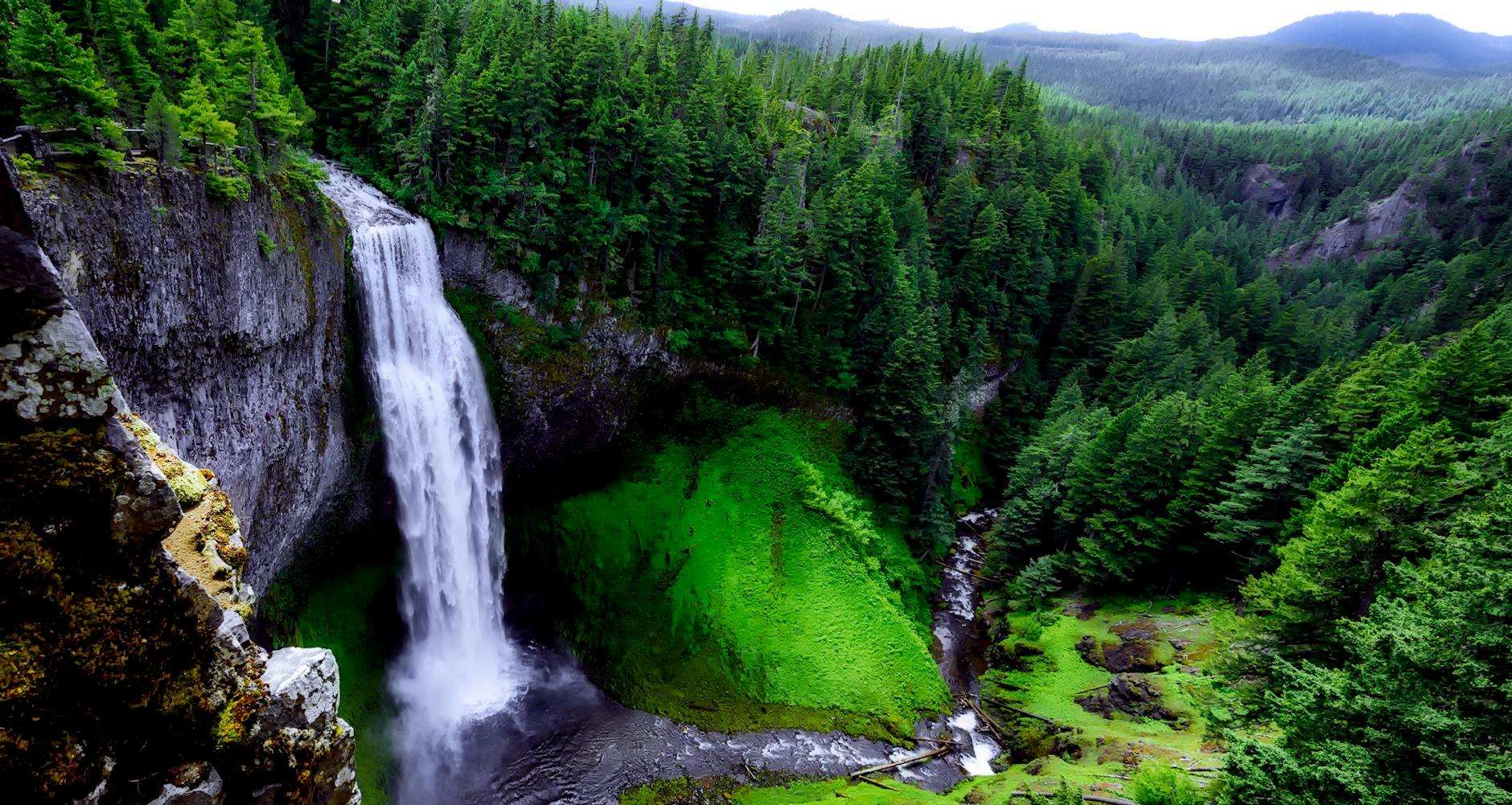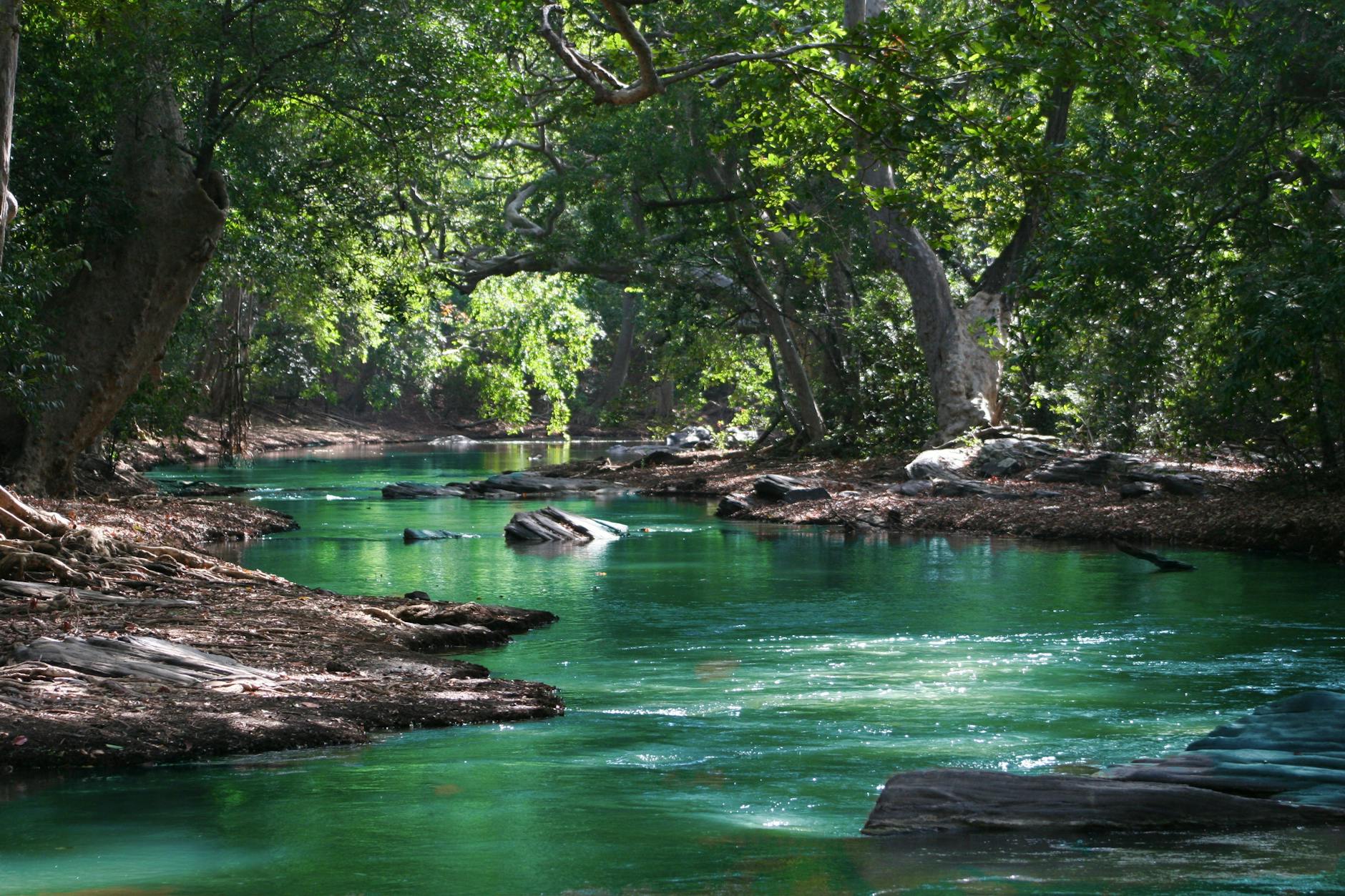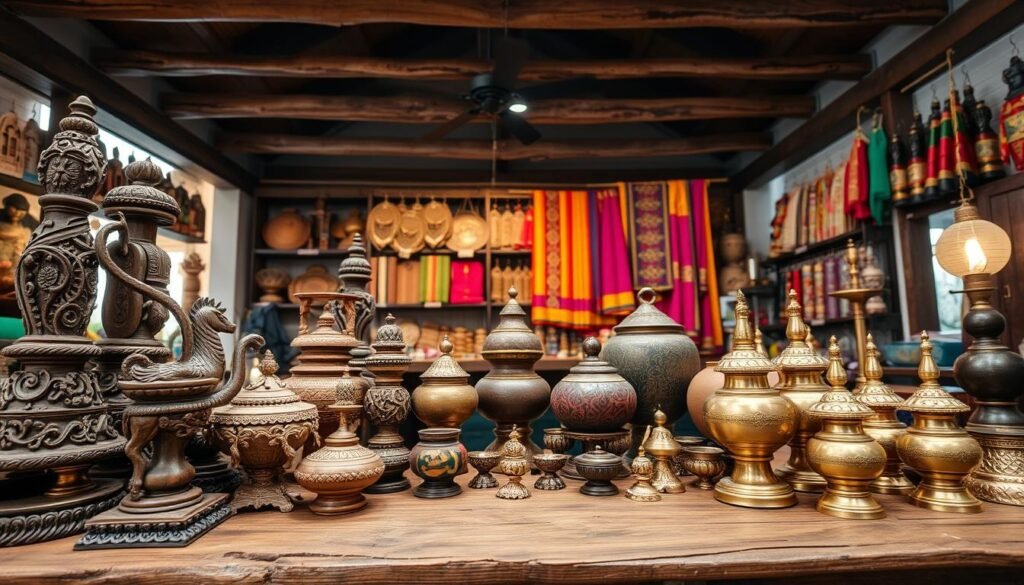
Ever stood at the edge of a 300-foot waterfall that barely any tourists know about? That’s Chuna Gota for you – Maharashtra’s best-kept secret that locals have been protecting from the Instagram crowds.
When I first discovered Chuna Gota Waterfall tucked away in the Western Ghats, I couldn’t believe it wasn’t plastered across travel magazines. The pristine pool, the deafening roar, the mist that cools you down before you even reach the base.
In this guide, I’m breaking down seven compelling reasons why this hidden gem deserves a spot on your Maharashtra bucket list. And trust me, reason #4 is something no other waterfall in the region can offer you.
But first, let me tell you about the unexpected encounter I had with a local family that completely changed how I view sustainable tourism…
Natural Beauty That Takes Your Breath Away

Pristine cascading waters surrounded by lush greenery
The first time I saw Chuna Gota Waterfall, I actually gasped. No joke.
This isn’t your typical tourist-packed waterfall with concrete paths and souvenir shops. The cascade drops about 70 feet into a crystal-clear pool that looks like something out of a fantasy movie. The water is so pure you can spot tiny fish darting between the rocks.
What makes it truly special is the contrast – that brilliant white water against the deep greens of the surrounding forest. The monsoon season transforms it into a thundering beast, while summer reduces it to a gentle, misty ribbon.
Perfect photography spots for nature lovers
Want Instagram gold? There are three spots you absolutely can’t miss:
- The Lower Basin View – stand on the flat rock about 50 meters from the base
- The Overhanging Tree – there’s a bent tree midway up the trail that frames the falls perfectly
- The Morning Mist Shot – arrive before 9am when sunlight creates rainbow effects through the spray
Photographers, bring your polarizing filters. The water reflection can be tricky to capture without them.
Seasonal variations that make each visit unique
Chuna Gota isn’t the same waterfall twice. Ever.
During monsoon (June-September), it’s a roaring giant with dangerous currents but spectacular power. October to December gives you moderate flow with the bonus of wildflowers carpeting the approach trail.
Summer months (March-May) reveal fascinating rock formations normally hidden beneath rushing water. The pool becomes swimmable then too.
Lesser-known viewpoints for the perfect panorama
Skip the main viewing platform where everyone clusters. Instead:
Head up the barely visible trail to the right of the main path. After about 15 minutes of climbing (wear proper shoes!), you’ll reach Eagle Point – a natural rock ledge with a 180° view of the falls and valley.
Or try the downstream approach. Wade through the shallow stream about 400 meters below the falls to find a secret grotto where the entire waterfall reflects in a natural pool, framed by hanging vines.
Off-the-Beaten-Path Adventure

How to find this hidden waterfall
Let me tell you – finding Chuna Gota Waterfall is half the adventure! It’s tucked away about 12 kilometers from the nearest town, and that’s exactly why it remains pristine.
Start at Sanjay Village and ask locals for the trailhead – they’re super friendly and often point you in the right direction with a smile. The trail isn’t marked on most maps, which keeps the Instagram crowds away.
You’ll cross two small streams before reaching a fork in the path. Take the right trail (the left one leads to a viewpoint, worth checking on your way back). After about 45 minutes of hiking through dense forest, you’ll start hearing the thunderous roar – that’s when you know you’re close!
Best times to visit to avoid crowds
The sweet spot? Early weekday mornings in October and November.
Most tourists hit this place on weekends between 10am-2pm. Show up at 7am on a Tuesday and you might have the entire waterfall to yourself for hours. Pure bliss.
Avoid monsoon season (June-September) since the trails get dangerously slippery and water levels rise unpredictably. December-February offers crystal clear water, but it gets chilly for swimming.
| Month | Crowd Level | Water Flow | Trail Condition |
|---|---|---|---|
| Oct-Nov | Low (weekdays) | Moderate | Excellent |
| Dec-Feb | Medium | Low-Medium | Good, dry |
| Mar-May | High | Low | Dusty, hot |
| Jun-Sep | Low | Very high | Dangerous, slippery |
Recommended gear for the trek
Don’t make the rookie mistake of showing up unprepared. This isn’t your neighborhood park.
Sturdy water-resistant hiking shoes are non-negotiable – the rocks get slippery even in dry season. Pack light but smart: a small backpack with a waterproof pouch for electronics, a quick-dry towel, and a change of clothes.
Water filtration is key since you’ll want to refill along the way. Those fancy filtered water bottles actually work wonders here.
Bug spray might save your sanity, especially during dawn and dusk hours. And grab a basic first aid kit – nothing elaborate, just essentials for minor scrapes.
The sun hits differently at higher elevations, so slather on that sunscreen even on cloudy days. Your future self will thank you.
The Thrill of the Journey

A. Exciting trekking routes for different experience levels
Getting to Chuna Gota isn’t just about the destination—it’s about the journey, folks! There are three main routes, each serving up a different flavor of adventure.
The Beginner’s Path takes about 90 minutes. It’s well-marked and perfect if you’re bringing kids or just starting your trekking journey. The incline is gentle, with plenty of flat stretches to catch your breath.
Feeling more adventurous? The Riverside Trail follows the winding stream that eventually becomes the waterfall. It’s moderately difficult and takes around 2.5 hours, but the constant symphony of rushing water makes it worth every step.
Then there’s the Summit Descent—only for the seasoned trekkers among us. This 4-hour route starts at a higher elevation and descends toward the falls. The views? Absolutely jaw-dropping. You’ll see the entire valley spread out before you like nature’s own IMAX screen.
B. Flora and fauna you’ll encounter along the way
The trails to Chuna Gota are basically a walking National Geographic episode.
During spring and summer, wild orchids pop up everywhere, showing off colors that would make a rainbow jealous. The medicinal herb Brahmi grows abundantly near water sources—locals have been using it for memory enhancement for centuries.
Animal-wise, keep your eyes peeled for the barking deer (they actually bark!). If you’re super lucky, you might spot the elusive Indian giant squirrel leaping between trees like it’s auditioning for a superhero movie.
Birdwatchers, bring your binoculars! The hornbill’s distinctive call often echoes through the forest, and kingfishers flash their brilliant blue as they dive into streams.
C. Local legends about the waterfall
Every epic natural spot has its stories, and Chuna Gota is packed with them.
The most popular tale says the waterfall formed from the tears of a celestial nymph who fell in love with a mortal hunter. When he died, her endless tears created the cascade. Locals claim that on full moon nights, you can sometimes hear faint singing above the rush of water.
Another legend? The pool at the base supposedly has no bottom. Villagers tell stories of offerings dropped into the water reappearing in a sacred temple miles away. Nobody’s scientifically tested this one yet, but hey, some mysteries are better left unsolved.
Fishermen also believe the mist from the falls has healing properties. Many still collect water in small vials to treat everything from skin problems to heartache.
D. Navigation tips for first-time visitors
First time at Chuna Gota? Don’t sweat it.
The trails are color-coded now (thank goodness). Red markers are for advanced routes, yellow for intermediate, and green for beginners. If a marker has a white dot, it means there’s a viewpoint nearby—definitely worth the detour.
Cell service gets spotty about halfway to the falls. Download offline maps before you start, or better yet, grab one of the waterproof trail maps available at the base camp kiosk for just ₹50.
The best time to start your trek? Early morning, around 7 AM. You’ll beat both the heat and the crowds, plus catch that magical morning light filtering through the forest canopy.
Got lost despite all this advice? Look for the three tallest palm trees visible from most points on the trail—they stand right behind the waterfall.
E. Safety precautions to ensure a worry-free experience
Fun is fun until someone slips on a wet rock. Let’s avoid that.
Footwear is non-negotiable. Those cute fashion sneakers? Leave ’em at home. You need proper hiking shoes with good grip. The rocks around the falls get slippery enough to host an impromptu ice skating competition.
During monsoon season (June-September), the water level rises dramatically. Some sections of the trail might be closed. Always check the official Chuna Gota website before heading out.
The base of the falls creates a powerful undertow. Swimming is only permitted in designated areas marked by yellow buoys. Ignore this rule, and you’ll have local rangers blowing whistles at you faster than you can say “bad idea.”
Pack a basic first aid kit. Include bandages, antiseptic wipes, pain relievers, and antihistamines for unexpected bug encounters.
Last but crucial—tell someone your plans. Whether it’s hotel staff or a friend, make sure someone knows which trail you’re taking and when you expect to return.
Perfect Spot for Nature Immersion

Meditation and yoga opportunities by the falls
Ever practiced yoga with the sound of rushing water as your soundtrack? It’s life-changing. The natural amphitheater created by Chuna Gota’s rock formations offers perfect acoustics for meditation sessions.
Many visitors bring their yoga mats to the flat rocks near the pool below the falls. Morning sessions here are magical – the first light creates rainbow mists while you flow through your asanas.
Local guides sometimes offer guided meditation sessions on weekends. They’ve found spots where the negative ions from the waterfall are strongest, giving you that natural high that comes from being near moving water.
I met a woman who visits monthly just for her “waterfall therapy” as she calls it. She sits for hours on a particular boulder, eyes closed, just breathing.
Wildlife spotting possibilities
The undisturbed ecosystem around Chuna Gota is a wildlife watcher’s dream. Early mornings or late afternoons are prime time for spotting.
Birds are the stars here – kingfishers darting into the pools, eagles soaring overhead, and if you’re lucky, the rare Malabar Trogon with its crimson belly flashing through the canopy.
Mammals tend to be shyer, but patient observers might glimpse:
- Langur monkeys swinging through trees
- Wild boars along the forest edges
- The occasional sambar deer coming to drink
Butterfly enthusiasts, bring your cameras! The moist environment supports dozens of species, including the stunning blue oakleaf that perfectly mimics a dead leaf when its wings close.
Therapeutic benefits of the natural surroundings
The stress melts off you here. That’s not just a feeling – it’s science. The negative ions produced by falling water actually reduce cortisol levels in your body.
The forest around Chuna Gota contains certain plants that release phytoncides – natural compounds that boost our immune system. One weekend here does more for your health than a month of vitamins.
The symphony of natural sounds – water falling, leaves rustling, birds calling – creates what sound therapists call “white noise plus” that resets overactive brains.
Then there’s the coolness. Even in summer, the temperature near the falls stays about 5 degrees lower than surrounding areas. This natural air conditioning lets your body relax fully.
Most visitors report sleeping better for days after visiting. The combination of physical exertion, clean air, and mental relaxation creates the perfect recipe for healing.
Cultural Significance to Local Communities

Indigenous connections to the waterfall
The story of Chuna Gota Waterfall isn’t complete without understanding its deep spiritual roots. For centuries, the indigenous Kotha tribe has considered these cascading waters sacred ground. They believe the waterfall serves as a direct channel to their ancestors and forest deities.
What makes this connection so special? The Kotha people tell stories about how their ancestors discovered the falls during a severe drought, saving their community from extinction. Ever since, they’ve treated the area with profound reverence.
Many tribal elders still make monthly pilgrimages to the waterfall, performing quiet meditation at dawn when the mist creates rainbow prisms in the morning light. They say this is when the veil between worlds is thinnest.
Traditional ceremonies and celebrations
The waterfall transforms into a vibrant cultural hub during key seasonal transitions. The most spectacular is the three-day Jal Utsav (Water Festival) held at the beginning of monsoon season.
Picture this: hundreds of locals dressed in vibrant colors, dancing along the pathways leading to the falls. Musicians playing traditional drums and flutes create rhythms that somehow perfectly match the waterfall’s natural cadence.
During harvest celebrations, families bring offerings of fresh produce, placing them on leaf plates that are ceremoniously floated downstream. It’s believed that if your offering makes it past the churning waters without capsizing, you’ll have good fortune in the coming year.
What’s fascinating is how these traditions have survived for generations without much documentation – passed down purely through oral storytelling and practice.
How locals have preserved this natural wonder
The Chuna Gota Waterfall remains pristine today largely thanks to grassroots conservation efforts by surrounding villages. Unlike many tourist spots that have succumbed to commercialization, locals established a community-led preservation committee back in 1986.
Their approach is refreshingly practical. They limit daily visitors, especially during ecologically sensitive periods. They’ve rejected multiple offers from hotel chains and instead developed a system of homestays that keeps tourism revenue within the community.
The committee also runs a seed bank of native plants, systematically reforesting areas that were previously degraded. Young people from the villages serve as guides, not just showing visitors around but educating them on the ecological and cultural significance of the falls.
The result? A sustainable model where tourism and preservation work hand-in-hand rather than against each other.
Activities Beyond Just Sightseeing

Swimming in the natural pools
Think Chuna Gota Waterfall is just for snapping photos? Think again.
The natural pools formed at the base of the waterfall are perfect for a refreshing dip. The water is incredibly clear – you can actually see the rocky bottom! During summer months, these pools become nature’s perfect swimming spots.
Just be smart about when you go. After heavy rainfall, currents can get strong. Best swimming happens during dry seasons when water levels are stable. Bring water shoes if you have them – those rocks can be slippery!
Rock climbing opportunities for adventure seekers
Got an adventurous streak? The rock formations surrounding Chuna Gota are a climber’s playground.
Several routes cater to different skill levels, from newbie climbers to those looking for a serious challenge. The volcanic rock provides excellent grip, and the varied terrain means you’ll never get bored.
Local guides offer equipment rentals and can show you the safest routes. They know which spots give you the most spectacular views of the waterfall while you climb.
Picnic spots for family outings
Scattered around the waterfall are perfect little nooks for spreading out your picnic blanket. Flat rocky outcrops and grassy patches make ideal spots to enjoy lunch with the soothing sounds of cascading water as your backdrop.
Many areas offer natural shade from surrounding trees, so you can escape the midday sun. Some spots even have makeshift stone tables formed by nature itself!
Camping possibilities nearby
Can’t get enough of Chuna Gota in just one day? No problem.
Several designated camping areas sit within a kilometer of the waterfall. Fall asleep to the distant rumble of water and wake up to misty morning views. Most sites are basic but well-maintained with fire pits and cleared spaces for tents.
For the full experience, book a spot on the eastern ridge. The sunrise views over the waterfall valley are absolutely worth the early wake-up call.
Practical Tips for an Unforgettable Visit

Accommodation options in the vicinity
Want to make your Chuna Gota adventure more than a day trip? You’ve got options. The nearby village of Chandrapur offers homestays where locals welcome you with open arms and home-cooked meals. Nothing beats waking up to misty mountain views and the distant sound of rushing water.
For those who prefer more amenities, Amboli town (about 12km away) has mid-range hotels starting at ₹1,500 per night. The Forest View Resort and Whistling Woods are popular picks with clean rooms and decent food.
Feeling fancy? The Mountain Retreat in Sawantwadi (30km from the falls) offers luxury cottages with private balconies overlooking the valley.
Camping enthusiasts can pitch tents at designated spots near the waterfall base, but you’ll need permits from the local forest office. Just saying.
Local cuisine to try after your waterfall adventure
After getting soaked at Chuna Gota, your stomach’s gonna growl. Trust me.
The local Malvani cuisine is a must-try. Head to any of the small eateries near the waterfall parking area for authentic sol kadhi – a pink coconut milk drink with kokum that’ll cool you down like nothing else.
Kombdi vade (chicken curry with fluffy bread) is the region’s specialty. The spices hit differently here – they use a local blend you can’t find elsewhere.
Vegetarians, don’t worry. The zunka bhakar (chickpea flour dish with millet bread) and ghavane (rice pancakes) will blow your mind.
Seafood fans should make the short drive to coastal restaurants for fresh pomfret, surmai fry, and prawn curry that’ll make you weep with joy.
Souvenirs and crafts from nearby villages
The villages surrounding Chuna Gota are treasure troves of authentic crafts. In Kudal village, artisans create bamboo baskets and mats using techniques passed down for generations. These aren’t your typical tourist trinkets – they’re everyday items locals actually use.
The Sawantwadi lacquerware is a standout. These wooden toys and boxes come in vibrant colors that somehow look better with age. The royal family of Sawantwadi established this craft centuries ago, and it still thrives.
Don’t miss the Kolhapuri chappals (leather sandals) that mold to your feet over time. They’re practically indestructible – I’ve had mine for seven years.
Local spice mixes are packed in handmade paper pouches – the Malvani masala will transform your home cooking. Just a pinch, and suddenly your kitchen smells like the Western Ghats.
How to visit responsibly and minimize environmental impact
The raw beauty of Chuna Gota exists because it hasn’t been overrun. Let’s keep it that way.
Pack out everything you bring in. Those chip packets and water bottles don’t belong in paradise. The nearest garbage collection point is at the entry gate – use it.
Stick to marked trails. Creating new paths damages delicate vegetation and causes erosion. Those little plants fighting to grow between rocks? They’re preventing the whole hillside from washing away.
Skip the soap when swimming. Even “biodegradable” products mess with the water ecosystem. Those tiny fish and frogs thank you.
Visit in smaller groups. Large crowds scare away wildlife and create unnecessary noise pollution. The birds and animals are half the experience – don’t drive them away.
Support local guides instead of commercial tours. They know how to approach the falls without disturbing nature, plus your money goes directly to the community protecting this gem.

Chuna Gota Waterfall stands as a testament to nature’s undiscovered splendor, offering visitors not just a visual feast but a complete sensory experience. From its breathtaking natural beauty and off-the-beaten-path adventure to the cultural significance it holds for local communities, this hidden gem provides an escape from the ordinary. Whether you’re immersing yourself in nature, exploring surrounding attractions, or capturing perfect photographs, the journey to this waterfall is as rewarding as the destination itself.
As you plan your visit to this Chhattisgarh treasure, remember to follow the practical tips shared and consider exploring beyond just the waterfall. The easy access, combined with rich tourism opportunities in the region, makes Chuna Gota an ideal addition to your travel bucket list. Pack your sense of adventure and camera—nature’s hidden beauty awaits at Chuna Gota Waterfall.
Also Read – Top Tourist Places in Kerala Loved by Foreign Visitors




